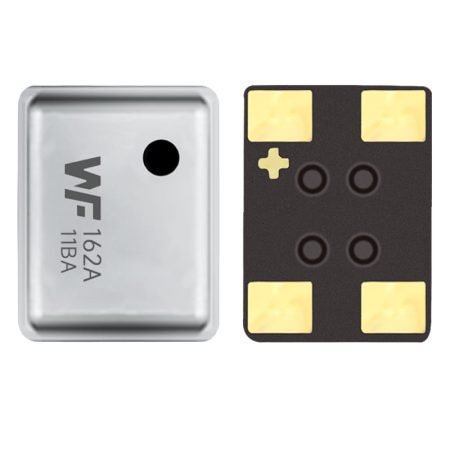Temperature drift has long limited the accuracy of pressure sensors, especially in absolute and low-cost sensors. The SSABP intelligent compensation method — Sparrow Search Algorithm (SSA) optimising a BP neural network — effectively suppresses zero-point drift and sensitivity shifts, keeps maximum error within 0.1%FS, speeds up training significantly, and is easy to embed. It suits analogue-amplified sensors and MEMS micro-pressure devices, improving engineering reliability and cost efficiency.
Catalog
1. The impact and mechanism of temperature drift
1.1 Temperature response of zero-point and sensitivity
When temperature changes, sensor materials expand or contract, altering the geometry and stress state of the sensing membrane or piezoresistive elements. That leads to zero-point drift and changes in sensitivity. For absolute pressure sensors and piezoresistive MEMS, these effects are especially pronounced over a wide temperature range. At the same time, analogue amplifiers’ gain and offset shift with temperature, adding further error. Effective high-precision compensation must therefore address both zero offset (bias) and gain (sensitivity) drift at the same time to preserve linearity and traceability across the operating temperature range.

2. Traditional compensation methods and their limits
2.1 Hardware compensation and look-up table challenges
Common approaches include hardware temperature compensation circuits, two-dimensional interpolation and look-up tables. These work well for weakly nonlinear and narrow temperature issues, but when temperature and pressure couple in complex, nonlinear ways, look-up tables demand a large number of sample points — raising storage and calibration costs. Hardware solutions increase BOM and maintenance complexity. For low-cost sensor lines, these methods struggle to balance accuracy, cost and resource use, limiting measurement reliability and consistency in harsh environments.
2.2 Nonlinear coupling issues
Temperature–pressure nonlinear coupling can appear as temperature-dependent zero offset, temperature-dependent sensitivity, and temperature-induced nonlinear response. These effects stack, so a single linear calibration or a simple look-up table rarely covers all error sources. In wide temperature ranges and multi-point pressure tests, traditional methods find it hard to ensure compensation at the ≤0.1%FS level. That’s why we need intelligent algorithms that can model complex nonlinear mappings and generalise well.
3. The SSABP intelligent compensation scheme and algorithm flow
3.1 Why SSA with BP is steadier and faster
The Sparrow Search Algorithm (SSA) is inspired by flock foraging behaviour. It splits the population into discoverers, followers and sentinels, which together balance global search and local refinement. Using SSA to optimise a BP (backpropagation) neural network’s initial weights and thresholds gives high-quality starting points, preventing the BP net from getting stuck in poor local minima and speeding up convergence. BP then does fine training to map the nonlinear relationship between temperature and sensor output. The SSABP fusion keeps strong nonlinear fitting while notably cutting training iterations and improving compensation stability, which makes it easier to roll out in engineering practice.
4. Embedded implementation and sensor compatibility
4.1 Deploying the compensation model with limited resources
When engineering a solution, consider MCU compute power, storage and real-time sampling constraints. The recommended route is to train SSABP on a PC, export pruned and quantised weights or a simplified look-up mapping, then embed the model in firmware using fixed-point arithmetic or compact tables. This approach suits absolute pressure sensors, piezoresistive micro-pressure devices and sensors with analogue amplification. For low-cost sensors, apply model pruning, quantisation and compressed interpolation tables to cut resource use while keeping compensation accuracy — enabling mass production and reliable field operation.
5. Performance validation and engineering value
5.1 Test results and engineering benefits
In tests covering 20°C to 50°C at eight temperature points and ±40 kPa at nine pressure points (72 data sets), SSABP kept maximum error within 0.1%FS and sped up training by roughly 8–9×. The engineering gains include better measurement reliability, lower batch calibration costs, and allowing low-cost sensors to deliver usable accuracy across complex temperature ranges. That opens the door for deployment in industrial automation, power systems, aerospace and outdoor environmental monitoring, and supports embedded use in absolute and analogue-amplified sensors.
Conclusion
Temperature drift is a key factor limiting long-term accuracy in pressure sensors. SSABP’s algorithmic collaboration overcomes the precision and efficiency limits of traditional methods: it holds maximum error to within ±0.1%FS, drastically shortens training time, and is straightforward to embed. The scheme fits absolute pressure sensors, analogue-amplified sensors and low-cost MEMS devices, offering a practical, production-ready path to high-precision compensation.
The above introduction only scratches the surface of the applications of pressure sensor technology. We will continue to explore the different types of sensor elements used in various products, how they work, and their advantages and disadvantages. If you’d like more detail on what’s discussed here, you can check out the related content later in this guide. If you are pressed for time, you can also click here to download the details of this guides air pressure sensor product PDF data.
For more information on other sensor technologies, please visit our sensors page.
